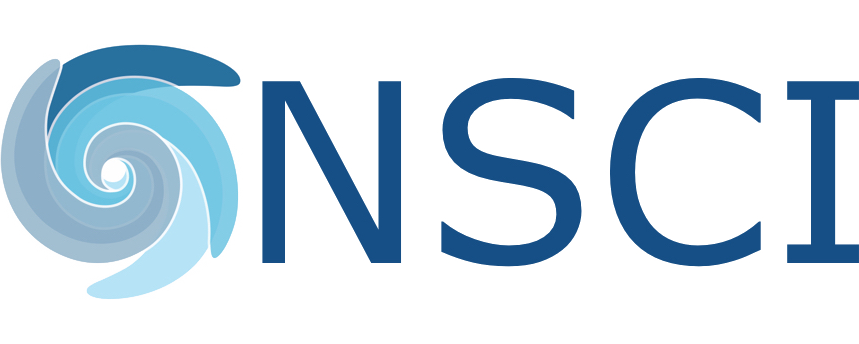Nathan Boles, Ph.D.

The long-term goal of Dr. Boles’ research is to address the following question: How and why do stem cells differentiate? His main approach to this issue has been to investigate the changes in the expression profile of stem cells during differentiation. He has made several contributions to the field, including a database of changes in gene expression across the hematopoietic tree (as a graduate student in Peggy Goodell’s lab) and across a human model of corticogenesis (as a postdoctoral fellow in Sally Temple’s lab). During these projects, he developed multiple algorithms to analyze expression profiles, including a method to easily determine the developmental time of a cortical differentiation making it simpler to compare across differentiations and pluripotent stem cell lines. Since establishing his group at the Neural Stem Cell Institute, he has focused on using his expertise in bioinformatics and stem cells to help characterize the retinal pigmented epithelium stem cell, brain development, and stem cell aging.
Dr. Boles’ Contributions to Science
Dr. Boles created a timeline of gene expression changes in human corticogenesis. The prefrontal cortex is the focus of several psychiatric diseases and degenerates in some early-onset dementias. Consequently, the developmental processes underlying human prefrontal cortex development are of major interest. Dr. Boles and his collaborators developed a protocol generating prefrontal cortex from human pluripotent stem cells (hPSC), performed a temporal transcriptome analysis using RNA-seq, and created a database of gene expression changes during human corticogenesis (1). Using a systems biology approach in combination with R programming, he identified vital pathways and potential regulators of each stage of corticogenesis. In addition to providing new targets for understanding the development of the cortex, this database can potentially provide a reference for comparison of patient-derived iPSCs to identify changes occurring in cortical disease. This database has been highly accessed in its first year (~30,000 page views). Using this database, they proceeded to develop new bioinformatic techniques to analyze transcriptomic data over a developmental time course (2) and a simple method to identify the developmental time of a cortical differentiation compatible with a high throughput neurotoxin screen (3).
- van de Leemput J, Boles NC, Kiehl TR, Corneo B, Lederman P, Menon V, Lee C, Martinez RA, Levi BP, Thompson CL, Yao S, Kaykas A, Temple S, Fasano CA. CORTECON: a temporal transcriptome analysis of in vitro human cerebral cortex development from human embryonic stem cells. Neuron. 2014 Jul 2;83(1):51-68. PubMed PMID: 24991954.
- Bennett KP, Brown E, De los Santos H, Poegel M, Kiehl TR, Patton EW, McGuinness DL, Temple S, Boles NC. WINDOWS OF SUSCEPTIBILITY FOR ZIKA VIRUS INDUCED MICROCEPHALY IDENTIFIED BY TEMPORAL GENE ANALYSIS OF A PLURIPOTENT STEM CELL MODEL. International Society for Stem Cell Research; 2017 June 16; Boston, MA, USA.
- Laurilliard EJ, Allen CA, Boles NC. In vitro assay for detection of developmentally neurotoxic chemicals. NextGen Stem Cell Conference; 2017 August 03; Hartford, CT, USA.
Dr. Boles identified drivers of differentiation into multiple lineages in the hematopoietic tree and developed an algorithm to examine the status of chromatin. Hematopoietic stem cells (HSC) give rise to a set of cells with vastly divergent functions and morphologies. In order to better characterize the HSC and its progeny and to uncover potential regulators of hematopoietic differentiation, Nathan and colleagues undertook expression profiling of purified HSC and the terminally differentiated cells of the hematopoietic system (4). Using R, they identified potential regulators of hematopoiesis and demonstrated that overexpression of specific regulators was sufficient to drive HSC to a particular lineage. Furthermore, he provided support to the hypothesis that adult stem cells have a more open or permissive chromatin state than their progeny by using R to develop an algorithm that created and compared chromosomal expression maps of each cell type. Overall, in addition to giving rise to multiple projects (5,6), this work has been widely accessed and cited.
- Chambers SM, Boles NC, Lin KY, Tierney MP, Bowman TV, Bradfute SB, Chen AJ, Merchant AA, Sirin O, Weksberg DC, Merchant MG, Fisk CJ, Shaw CA, Goodell MA. Hematopoietic fingerprints: an expression database of stem cells and their progeny. Cell Stem Cell. 2007 Nov;1(5):578-91. PubMed PMID: 18371395; PubMed Central PMCID: PMC2475548.
- Challen GA, Boles NC, Chambers SM, Goodell MA. Distinct hematopoietic stem cell subtypes are differentially regulated by TGF-beta1. Cell Stem Cell. 2010 Mar 5;6(3):265-78. PubMed PMID: 20207229; PubMed Central PMCID: PMC2837284.
- Berg JS, Lin KK, Sonnet C, Boles NC, Weksberg DC, Nguyen H, Holt LJ, Rickwood D, Daly RJ, Goodell MA. Imprinted genes that regulate early mammalian growth are coexpressed in somatic stem cells. PLoS One. 2011;6(10):e26410. PubMed PMID: 22039481; PubMed Central PMCID: PMC3198398.
Dr. Boles characterized the roles of CD48 and interferon-gamma (Ifng) in the hematopoietic stem cell niche. Maintaining stem cell homeostasis requires a balance of signaling from both the niche and downstream progeny of the HSC. Dr. Boles and his collaborators established a role for Ifng in promoting long-term HSC proliferation and activity in both normal hematopoiesis and in response to infection (7). We also demonstrated that mice with defective components controlling the IFNg signaling apparatus show severe defects in HSC activity (8,9). Additionally, he revealed a role for CD48 as an environmental sensor that interacts with short-term hematopoietic progenitors to modulate cytokine production, especially Ifng (9). Overall, this work outlined a role for inflammatory molecules contributing to stem cell homeostasis in the hematopoietic system.
- Baldridge MT, King KY, Boles NC, Weksberg DC, Goodell MA. Quiescent haematopoietic stem cells are activated by IFN-gamma in response to chronic infection. Nature. 2010 Jun 10;465(7299):793-7. PubMed PMID: 20535209; PubMed Central PMCID: PMC2935898.
- Boles NC, Lin KK, Lukov GL, Bowman TV, Baldridge MT, Goodell MA. CD48 on hematopoietic progenitors regulates stem cells and suppresses tumor formation. Blood. 2011 Jul 7;118(1):80-7. PubMed PMID: 21576698; PubMed Central PMCID: PMC3139389.
- King KY, Baldridge MT, Weksberg DC, Chambers SM, Lukov GL, Wu S, Boles NC, Jung SY, Qin J, Liu D, Songyang Z, Eissa NT, Taylor GA, Goodell MA. Irgm1 protects hematopoietic stem cells by negative regulation of IFN signaling. Blood. 2011 Aug 11;118(6):1525-33. PubMed PMID: 21633090; PubMed Central PMCID: PMC3156044.
